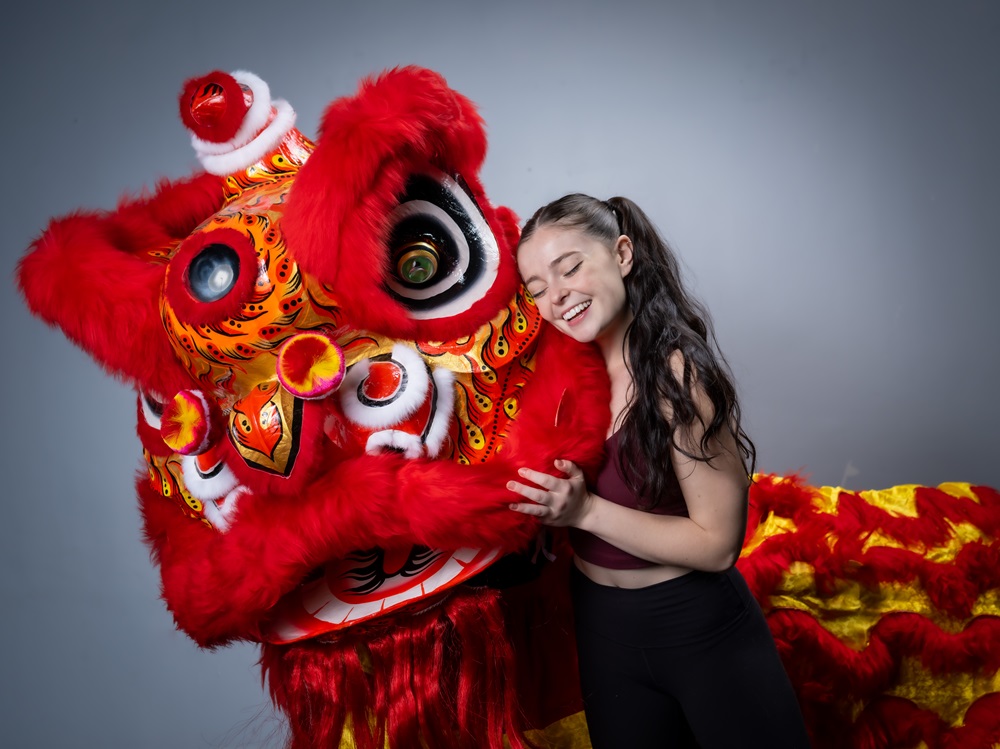
Celebrate the Year of the Dragon with Spectacular Lunar New Year Performances!
Ring in the Year of the Dragon with Nai-Ni Chen Dance Company with an unforgettable weekend at the Kupferberg Center for the Arts at Queens College, Flushing, NY. These joyous Lunar New Year events will be a cultural extravaganza filled with vibrant performances, traditional festivities, and immersive experiences. Tickets are available online or by phone at (718)-793-8080.
The Year of the Dragon is considered one of the most auspicious and significant years in the Chinese zodiac, symbolizing strength, courage, and good fortune. To mark this special occasion, Kupferberg Center for the Arts has partnered with the renowned Nai-Ni Chen Dance Company to create a celebration like no other.
Family-friendly performances will take place on Saturday, January 27, and Sunday, January 28 at 3pm, featuring majestic dragons, dancing lions, Mongolian dance, acrobats, and much more, with all tickets $20 (no additional fees).
On Saturday, January 27 at 7pm, the company will present a contemporary program combining modern and traditional dances. Be prepared to be enthralled by their mesmerizing choreography, combining contemporary and traditional elements in a breathtaking display of talent and culture. Tickets are $30 (no additional fees).
The program includes:
Lion in the City a new collaborative work by Hip-Hop legend Rokafella and Kwikstep with Company’s Director of New and Contemporary Dance Peiju Chien-Pott. This new lion dance integrates Hip-Hop movement and beats with traditional Chinese Lion Dance. There are many styles of the Lion Dance in China, and for 2023, the Company celebrated the 50th Anniversary of Hip-Hop, memorializing the pioneering spirit of Nai-Ni Chen, who began working with Rokafella and Kwikstep in 2017, developing a dialog between her contemporary/Chinese movement style and hip-hop.
Dragon Festival is the most spectacular folk dance performed in the Lunar New Year Celebration. The Chinese Dragon is a spiritual and cultural symbol that represents prosperity and good luck, as well as a water deity that nurture harmony. In this dance, the choreographer first creates a big festival with numerous colorful props and fanciful dance steps. For those fortunate to see this dance in the Lunar New Year, their coming year will be filled with peace, harmony and good fortune.
Mongolian Festival is a new work commissioned by the New Jersey Performing Arts Center in 2024 for the year of the Dragon. The Mongolian people are one of the five major races that make up the Chinese people. Mongolian Dance movements originated from the nomadic life of the people. This dance expresses the joy of the Mongolian people as they celebrate the completion of their herding season.
Whirlwind is a phenomenon in the desert caused by the air coming from the mountains to the plain in different directions. This dance takes inspiration from the choreographer’s journey on the Silk Road which passes through Central Asia, connecting China to Europe and crossing many deserts and mountains. It was the pathway not only connecting trade and merchandise but also cultures, art and religions of many countries. In Central Asia, some believe Whirlwind is the manifestation of the great breath, the divine energy of the universe. Whirlwind is an exploration of movements based on trance, rhythmic breathing, sound and spiral motion.
Way of Fire is an exploration of the ancient Chinese theory that the cycles of creation and destruction correspond to the ever-changing phenomena of nature. The “Five” refers to the five elements: wood, water, fire, metal, and earth. The cycles are also used to mark the passage of time. For instance, this year is the year of the Wood Dragon. Each element, as part of the forces of nature, creates another in harmony and destroys another in conflict. This exploration focuses on the element of “Fire,” which is used to extract metal and can be destroyed by water. With live music by Wei Sun on guzheng.
Spear Dance is taken from the Chinese Peking Opera, which has over three hundred years of history and is considered the most well-preserved Chinese performing art in China. The dancer in this piece portrays a warrior who is preparing to go into the battlefield. His strength is shown through his acrobatic movements and dramatic poses.
Coinstick Dance originated with the Hans in Hubei province and is traditionally done by street performers. People drill holes in the sticks, which are made of bamboo, and fill the holes with coins. Dancers hit the sticks against their bodies and the ground to produce interesting rhythms as they move, and they often incorporate acrobatic skills. Today, this dance is usually performed in groups of men and women during festival celebrations.
Bridging the grace of Asian elegance and American dynamism, the Nai-Ni Chen Dance Company is a premier provider of innovative cultural experiences that reflect the inspiring hope and energy of the immigrant’s journey. An Asian American company that celebrates cross-cultural experience, the Company’s productions naturally bring forth issues of identity, authenticity, and equality. For additional Company information, visit their website, www.nainichen.org
